ASUS at Computex 2016: The 10 Years of the Republic Of Gamers (ROG) Booth Tour
by Ian Cutress on June 22, 2016 8:00 AM ESTThe battle between ASUS and MSI for the best gaming ‘laptop’ is blurring some very thick lines. Both vendors now look at laptop water cooling as the top option, which drags the ‘laptop’ side of the equation heavily into a portable desktop scenario, depending on how heavy you think a portable system should be. At this point one might realize that the main difference between one of these systems and actually moving a desktop system is having to move a monitor, however I am told that high-end gaming notebooks, despite the investment, have a reasonable return and offer a flagship product at the top of the gaming notebook stack. At Computex we saw the next iteration of ASUS’s design, the GX800.
The ASUS ROG GX800: A Dual-GPU Liquid Cooled Laptop
On the last page we saw a 20L desktop design with dual GTX 1080s. The GX800 by comparison takes the higher efficiency GTX 980 MXM modules designed for laptops into the cooling loop, along with a Skylake based Core i7.
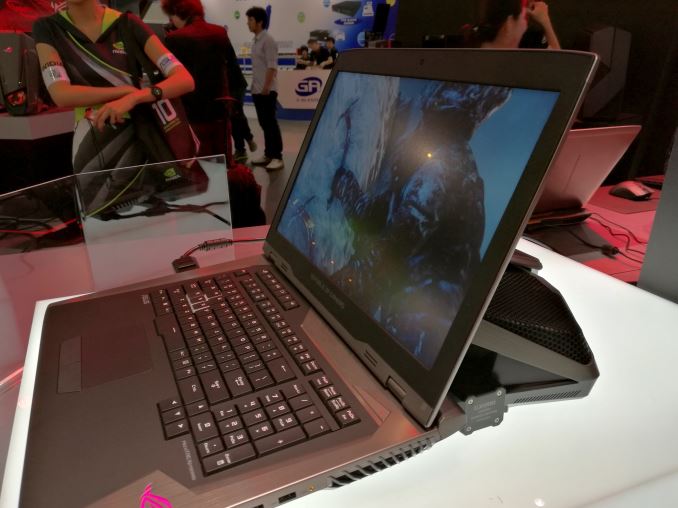
Click the image for the full resolution
The GX800 will come with a mechanical keyboard, offering 2.2mm of key travel, under the ‘MechTAG’ name. ASUS says they are using a custom type of switch, one they’re not willing to divulge at this time, but it should be akin to brown/red switches. It’s worth noting that by comparison to the main competition, ASUS has the keyboard in ‘the usual’ place for a notebook, whereas MSI has it at the bottom of the design as most gaming environments would necessitate a separate mouse.
On the sides we see a Thunderbolt 3 port, a USB 3.1 Type-C port (10 Gbps, and with TB3 indicates they are using the Intel Alpine Ridge controller), a USB 3.0 Type-A, separate mini-DisplayPort and HDMI ports, and a full-sized Ethernet port. There’s also an antenna segment, for users to have an external WiFi antenna, however it is worth noting that this in on the right-hand side of the system, which might cause a wire to interfere with anyone using a mouse on the right-hand side.
Obviously a system using dual GTX 980 graphics with a Core i7, even a 45W one, and a 4K display is going to be drawing some power. To that extent, ASUS uses two power supplies for the system. In order to use the discrete graphics, the power cable on the left in the image above needs to be in place as the system starts up. The system is designed to be overclocked, and if I recall correctly both power supplies should be around the 300-330W variety, allowing for a 600-660W system.
ASUS has not been discussing the GX800 that much in terms of exact specifications as of yet, though I would expect it to hit shelves in the second half of the year.
External Graphics: The XG Station 2
Back at CES in January we saw a number of external graphics solutions from ASUS, Razer and AMD. The latter two were using AMD’s solution over a Thunderbolt 3 PCIe based connection in a surprise collaboration between AMD and Intel, and the goal was to handle things like graphics hot-plug over TB3 appropriately. ASUS’ solution was to use a proprietary signal over TB3 to their XG Station, which would limit its usefulness to approved GPUs and approved ASUS laptops. For Computex, ASUS has dropped their custom solution and going with the recommended external graphics solution via Intel/AMD.
The XG Station 2 itself gets a design upgrade for the ROG 10-Year, featuring the Mayan design similar to the other ROG desktop products. The Station itself looks a little bit larger than before as well, with ASUS intent on physically supporting as many single GPU graphics cards as possible.
In opening it up, it is worth noting that the cooling methodology for this revolves around the three small fans at the top of the XG Station 2, drawing air in through the top and forcing it through the GPU. The exhaust then comes out the rear. Despite all the GPU action being on the left hand side of the device, the right hand side has some electronics so the dock can also be used for expansion ports.
In this case we have a USB 3.1 hub to allow for more ports, another network port (an Intel NIC), and additional Thunderbolt 3 connectors for other storage devices. It is worth noting that all the data goes through the single cable back to the main PC, and I’m unsure at this point which elements of the design have data priority (PCIe, networking, USB, or Display).




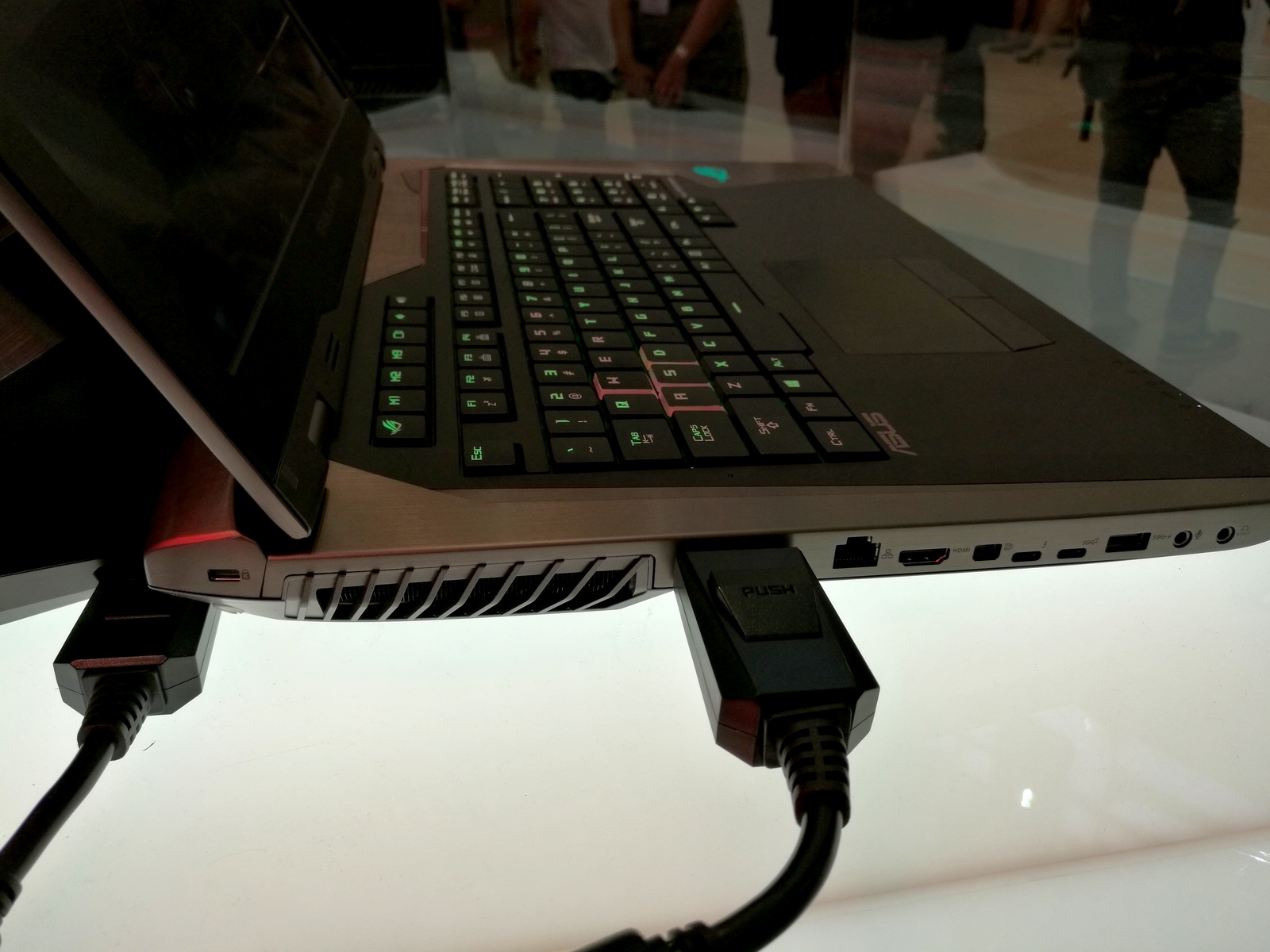
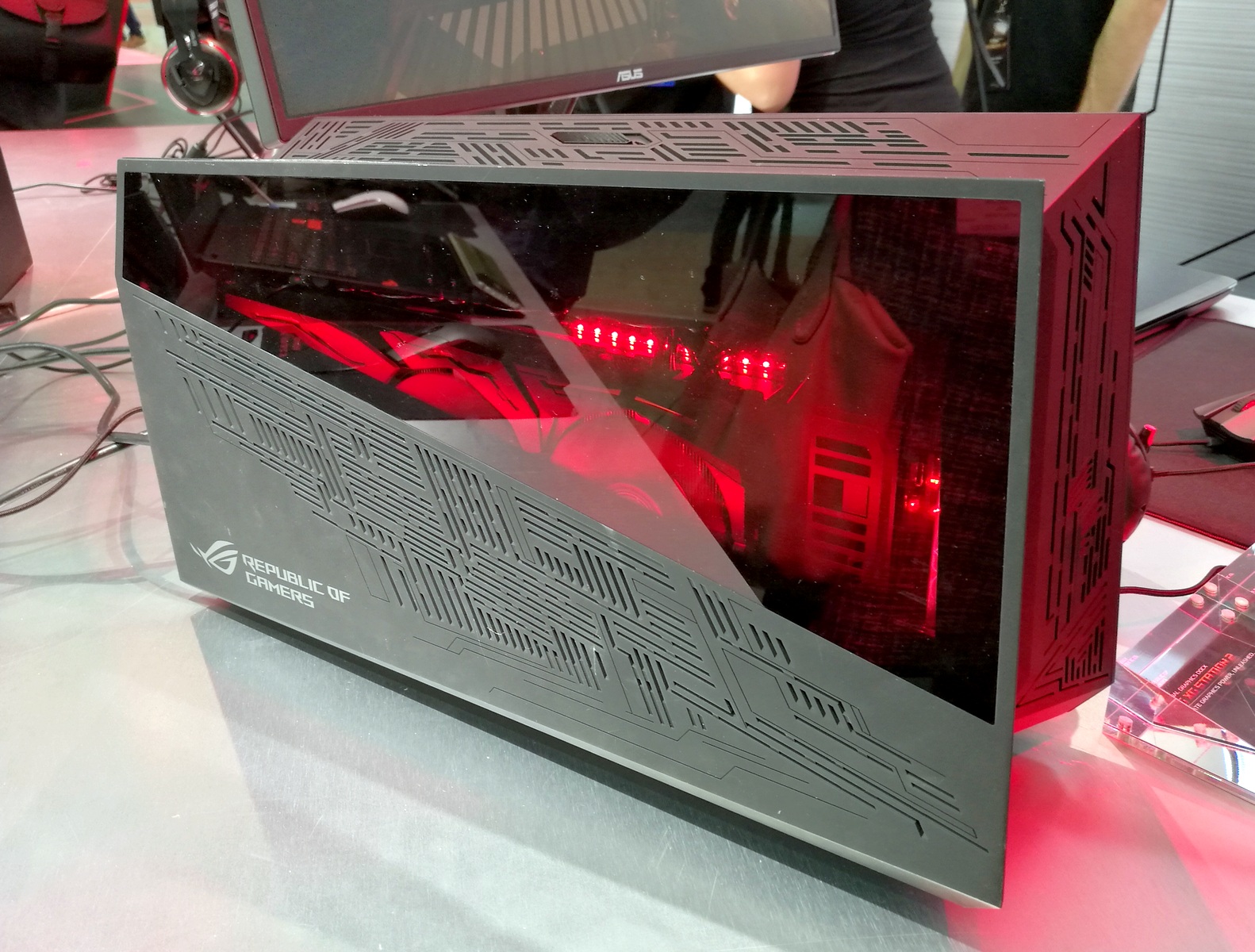
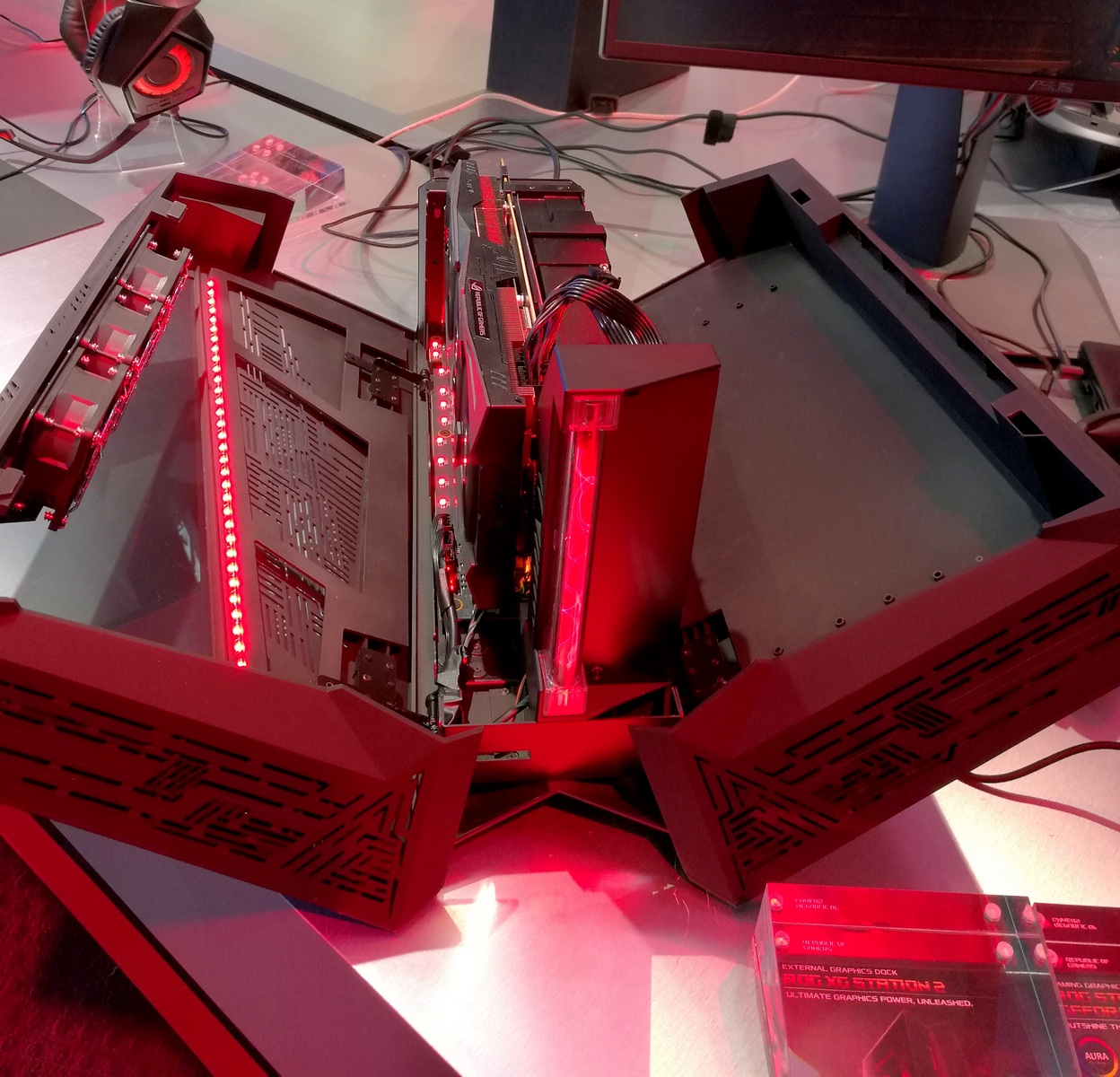
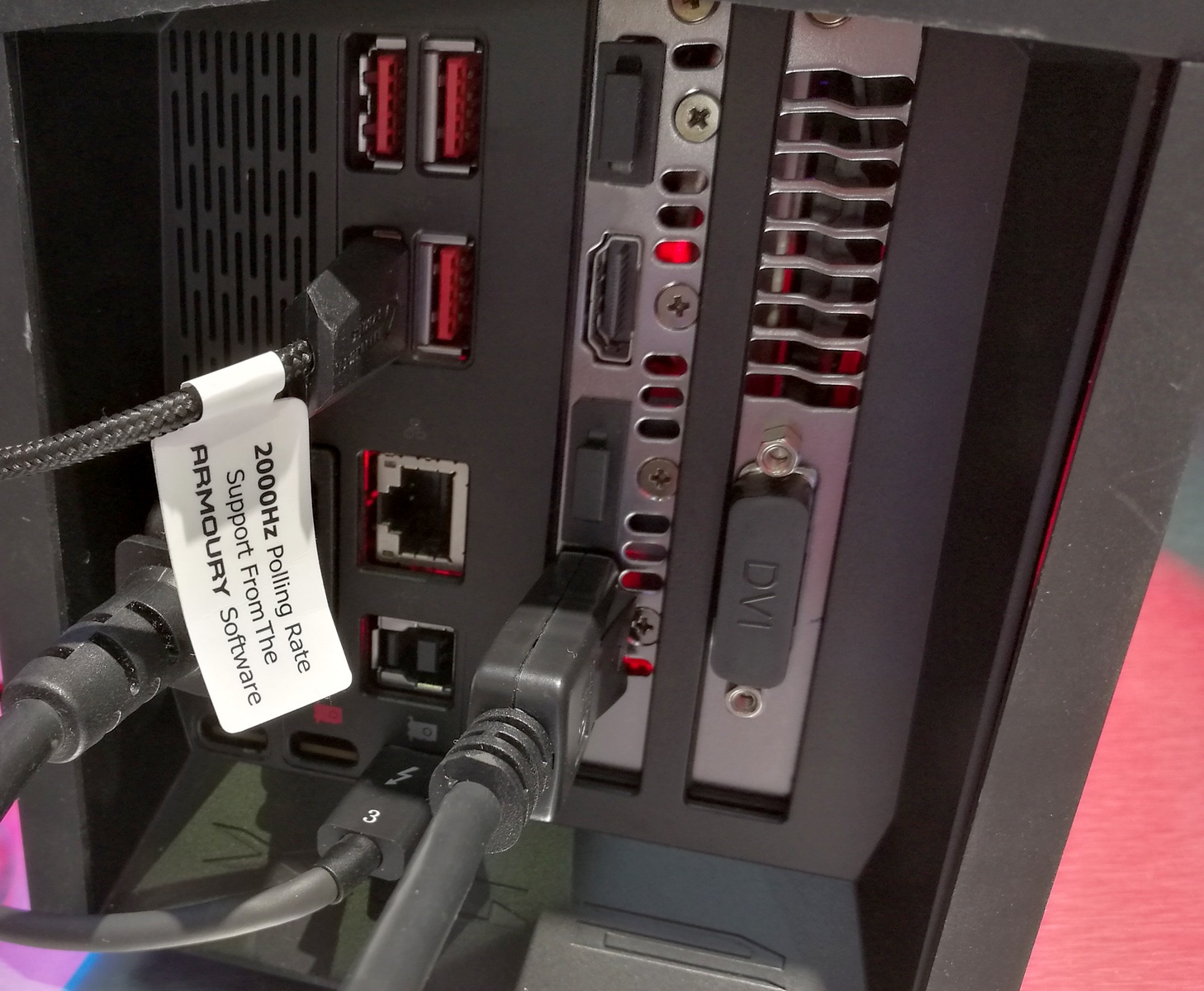
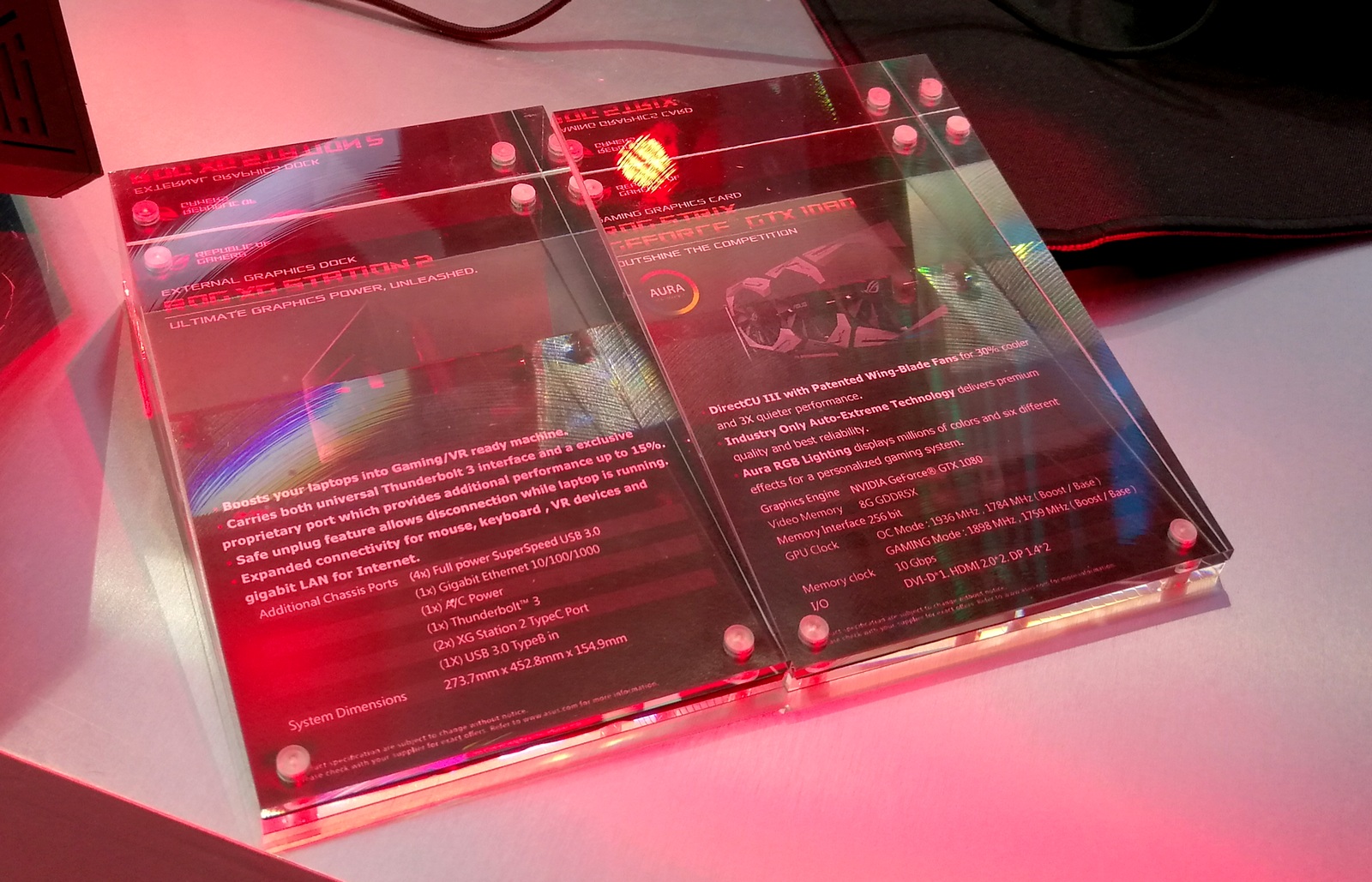








43 Comments
View All Comments
A5 - Wednesday, June 22, 2016 - link
End users who are buying Broadwell-E are almost always doing it for 3+ way SLI reasons, which pretty much forces you into full ATX.They presumably have research (or data from the past) that says they will not sell enough mATX boards with HEDT chipsets to be worth the engineering effort.
Bragabondio - Wednesday, June 22, 2016 - link
Well now that Nvidia would not support more than 2 cards SLI (except for benchmarking applications) the argument for 3 way SLI becomes moot. (micro ATX supports 2 way SLI). Starting to think we will be stuck with 4 core CPUs for the next 5+ years unless ZEN is a huge success.Sushisamurai - Wednesday, June 22, 2016 - link
uhhh... Nvidia still has 3 way/4 way SLI - they've only restricted SLI requirements to PCIe x8, versus AMD's crossfire x4; presumably to maintain a performance target. With "consumer" lines of Intel CPU's, you only get max 20 PCIe lanes (correct me if I'm wrong), allowing only 2 way SLI. HEDT chips have 28 to 40 to 40. Hence, 3 way to 4 way SLI is pretty much restricted purely to HEDT. Anandtech had an article about CPU/PCIe bottleneck with SLI/CF a ?few years back. If memory serves me correctly, PCIe x4 bottlenecks modern high end GPU's, and an i5 can run 2 high end GPU's without bottlenecking - it is when you go 3 cards you'll need an i7 for gaming (assuming you have enough lanes), and HEDT (my opinion now) if you want 4 cards (due to PCIe lanes, and enough cores to feed the cards)Bragabondio - Wednesday, June 22, 2016 - link
Correct until GTX 1070&1080 were introduced. Starting with the GeForce GTX 1080, Nvidia is discontinuing official support for 3-way and 4-way multi-GPU SLI setups.http://www.pcworld.com/article/3071332/hardware/it...
Sushisamurai - Thursday, June 23, 2016 - link
Oh that is messed up. I've read their white paper, didn't even know they trashed the enthusiast key option. Wow that's super unfortunate.alphasquadron - Wednesday, June 22, 2016 - link
"So I don't understand why manufacturers don't want my money?"I think they do but as stated in the article:
"The three major form factors for custom build personal computers, in order of popularity, are ATX, followed by micro-ATX and then mini-ITX."
I too am waiting for an external dock that I can plug my laptop into and achieve 80-90% of performance of a full size desktop. Whoever makes this will have grabbed two markets. Those who want a gaming desktop and are okay with huge cases (usually younger) and professionals like me who want the same but would never get a gigantic case. If we can get an external dock that tries to be compatible with most laptops as much as possible without looking like an eyesore and can deliver close to desktop performance, it would be an instant buy for a lot of people. As you now have a laptop and desktop. Though I think that this would come from a laptop manufacturer as if it was very well made and successful, I would think the market that would buy a desktop over a laptop for 10% gain in performance would be very small.
Bragabondio - Wednesday, June 22, 2016 - link
Guess I have to give my dream for small but super powerful desktop PC and embrace the reality that laptop/surface device + dock is the future for the middle aged professional :)Bragabondio - Wednesday, June 22, 2016 - link
One more thing. The ATX may be indeed most popular size but that is mostly due to tradition not function as 99% of the consumer market don't need/use all the slots and space of a larger ATX case. That is why I like project Avalon but nobody knows if it ever would become a reality.Ananke - Wednesday, June 22, 2016 - link
Unfortunately, in the current moment of the high tech industry, "middle age" is very inappropriate. Companies think their teen- and twenty-year old customers have many thousands of disposable income , and cater to them exclusively. Besides, young people buy easily obsolete or inferior tech, since they don't have comparison base :):). The only problem for the tech industry is, that younger population usually has no disposable income /and that's kinda universal truth over many centuries/ and just doesn't buy because it can't pay.Bragabondio - Wednesday, June 22, 2016 - link
well said Ananke! Plus, as a coup de grace now we have to deal with gazillion of RGB lights inside our cases - if I wanted a freaking X-mas tree inside my case I would have bought one ! :)